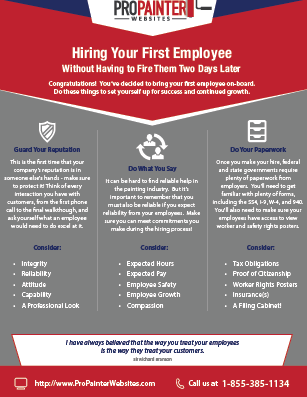Figure Out How Seasonal Factors Influence Industrial Exterior Paint Success And Find The Most Effective Times To Make Certain Long Lasting Results For Your Project
Figure Out How Seasonal Factors Influence Industrial Exterior Paint Success And Find The Most Effective Times To Make Certain Long Lasting Results For Your Project
Blog Article
Staff Author-Fox Rodriquez
When you're preparing an industrial external paint task, seasonal variables can make or break your outcomes. You'll wish to consider how temperature and humidity influence paint application and drying out times. Selecting the appropriate period can guarantee your paint adheres properly and lasts longer. Yet which periods are really the best for this kind of work? Allow's check out the crucial elements that can affect your job's success.
The Impact of Temperature on Paint Application
When you're planning a business outside painting job, the temperature can significantly affect how well the paint sticks and dries out.
Preferably, you want to repaint when temperatures range between 50 ° F and 85 ° F. If it's as well cool, the paint might not treat properly, resulting in problems like peeling or breaking.
On warehouse painting , if it's too warm, the paint can dry out as well quickly, avoiding proper bond and leading to an unequal surface.
You should likewise take into consideration the time of day; morning or late afternoon offers cooler temperatures, which can be extra beneficial.
Constantly check the manufacturer's recommendations for the details paint you're using, as they frequently supply support on the excellent temperature array for optimum results.
Moisture and Its Result on Drying Times
Temperature isn't the only environmental variable that influences your business external paint task; humidity plays a significant duty also. High moisture levels can slow down drying times drastically, influencing the total high quality of your paint task.
When the air is filled with dampness, the paint takes longer to cure, which can bring about problems like bad bond and a higher threat of mold development. If residential painters near me on an especially damp day, be prepared for extended wait times between layers.
It's critical to check regional climate condition and strategy appropriately. Preferably, go for moisture degrees in between 40% and 70% for optimum drying out.
Maintaining these consider mind guarantees your task stays on track and provides a long lasting finish.
Best Seasons for Commercial Exterior Paint Projects
What's the best season for your business exterior paint projects?
Springtime and early fall are generally your best choices. During these seasons, temperature levels are mild, and moisture levels are frequently reduced, creating perfect conditions for paint application and drying out.
Prevent summer's intense heat, which can cause paint to dry also quickly, causing inadequate bond and coating. Likewise, wintertime's cool temperature levels can prevent proper drying and curing, taking the chance of the long life of your paint job.
Aim for days with temperatures in between 50 ° F and 85 ° F for optimum outcomes. Keep in mind to check the local weather forecast for rainfall, as damp conditions can spoil your job.
Planning around these aspects ensures your paint project runs efficiently and lasts longer.
Final thought
In conclusion, intending your commercial external painting tasks around seasonal factors to consider can make a significant distinction in the end result. By scheduling work throughout the ideal temperature levels and moisture levels, you'll guarantee much better attachment and drying times. Keep in mind to watch on local weather report and choose the right time of year-- spring and very early loss are your best bets. Taking these steps will help you accomplish a durable and professional surface that lasts.
